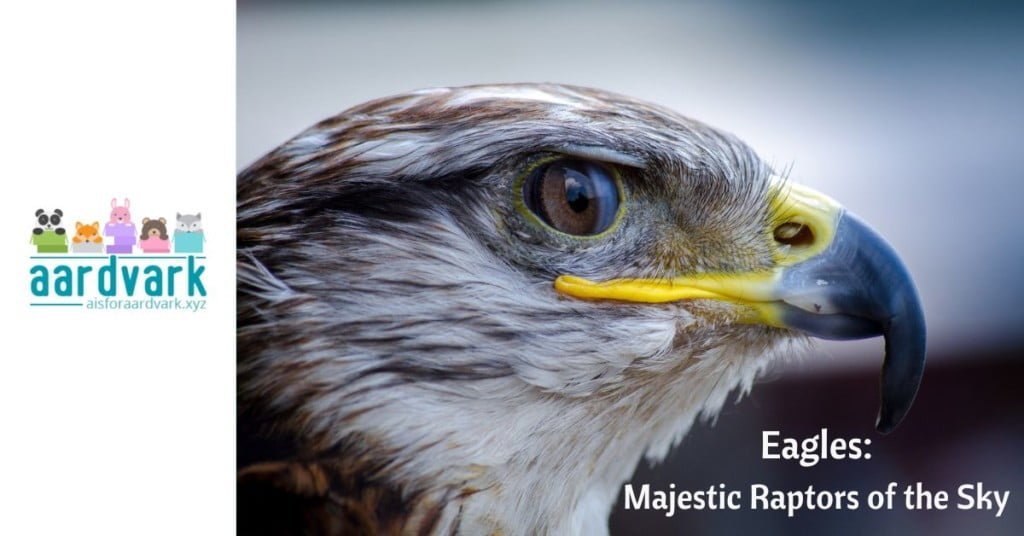Eagles, those magnificent birds of prey that have captured the imagination of people around the world, are more than just symbols of power and freedom; they are awe-inspiring creatures that reign supreme in the avian kingdom. With their diverse species and impressive hunting abilities, eagles have a special place in the world of ornithology. Let’s have a look at the basics about eagles of all types but with a special focus on the Bald Eagle.
Appearance and Diversity
Eagles are known for their striking appearances and vary significantly across species.
Size
Eagles come in various sizes, from the tiny South Nicobar serpent eagle, which measures around 16 inches in length, to the large Steller’s sea eagle, which boasts a wingspan of up to 8 feet.
Feathers
Eagles display striking color patterns in their feathers. Most don’t have the bright colors of some birds, but the eagles’ blacks, browns, whites, and grays form an impressive image for all who see them.
Beaks and Talons
Eagles are equipped with powerful, curved beaks and formidable talons, designed for capturing and devouring their prey.
Species Diversity
There are around 60 different species of eagles worldwide. In North America, the golden eagle is one of two species. But let’s talk a little more about the most famous one, the bald eagle.
The bald eagle (Haliaeetus leucocephalus) is the national bird and symbol of the United States. Known for its striking white head and tail feathers, the bald eagle has a wingspan that can reach up to 7 feet.
These eagles are predominantly found in North America and are often seen near large bodies of water, where they hunt for fish, their primary food source. It was on the endangered species list for many years, but conservation efforts have helped it recover. It’s now listed as a “least threatened” species.
Habitat and Range
Eagles inhabit a diverse range of environments, from forests to open plains. Their distribution varies according to their specific species. The bald eagle, for instance, is typically found near lakes, rivers, and coastal areas of North America.
Behaviors
Eagles exhibit remarkable behaviors that highlight their predatory prowess:
Hunting Techniques
Eagles are skilled hunters, using their keen eyesight to spot prey from high in the sky. They swoop down with incredible speed and precision to capture their quarry, which can range from fish to small mammals.
Nesting
Eagles are known for their impressive nests, which they build in tall trees or on rocky cliffs. These nests, called aeries, can reach enormous sizes and are often used year after year.
Mating Rituals
Many eagle species engage in intricate courtship displays, from aerial acrobatics to vocalizations, as they form strong pair bonds that can last a lifetime.
The Bald Eagle’s Cultural Significance
The bald eagle holds immense cultural importance, particularly in the United States, where it is a symbol of strength, freedom, and patriotism. It was chosen as the national emblem of the United States in 1782 and is featured on the nation’s Great Seal. The bald eagle’s image can be seen on currency, flags, and countless other national symbols.
The US isn’t the only country with an eagle as its national bird, though. The endangered Philippine Eagle represents the Philippines; the Federal Eagle represents Germany, and the Steppe Eagle is honored in Egypt. The Golden Eagle is the national bird of both Albania and Mexico. There are many others, as well – check out this list of national birds on Wikipedia.
Conservation Efforts
The bald eagle has faced significant conservation challenges in the past, particularly due to the effects of DDT, a harmful pesticide. However, through rigorous conservation efforts and legal protections, the bald eagle has made a remarkable recovery and was removed from the U.S. Endangered Species List in 2007. This success story serves as a testament to the importance of conservation and habitat preservation for the survival of these majestic birds.
Eagles, with their awe-inspiring appearances, diverse species, and cultural significance, have a special place in the world of ornithology. The bald eagle, with its special place in the hearts of Americans, stands as a testament to the strength and resilience of nature, reminding us of the importance of conservation efforts in preserving these majestic raptors for generations to come.





